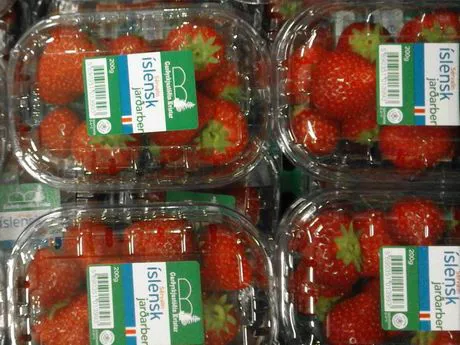
Above and below: Icelandic strawberries, cherry tomatoes and cucumbers. SFG managed to receive a structural good price for their growers.
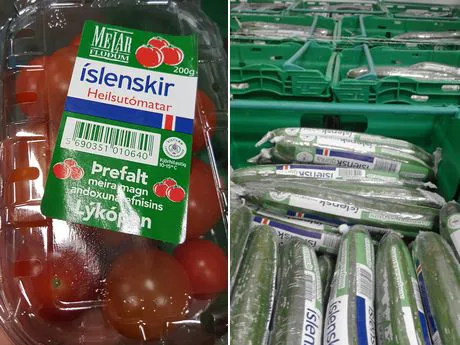
First of all the market in Iceland is unique. Gunnlaugur describes SFG as “The Greenery of Iceland” and although the goal of the organisations is the same, SFG isn’t on the same scale as the Dutch giant with 55 members and 6,000-7000 tonnes of sales. SFG was founded in 1940 by growers who wanted to market their products. “They collaborated for a better yield,” explains Gunnlaugur. “SFG is still working according to the same principles.”
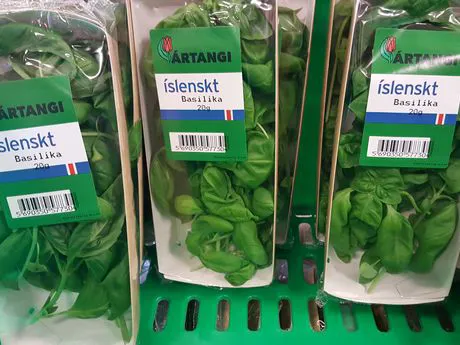
Icelandic basil.
Water quality is a significant factor
When Gunnlaugur became the director of SFG at the start of 2000 he invested heavily in labels, differentiation, branding and quality. “We have to make labels and brand the products similar like they do in Southern Europe in the wines. We have to better inform the market about the products. Traceability directly to the producer is the key element for the consumers in the Icelandic market as it has developed. Large part of the global market only compete on price where the consumers ask for quality and are willing to pay more for trusted producers. If the price is the only issue procurers are forced to constantly find new ways to save money, at the expense of the quality.” The Icelander sees Heineken and wine houses as an example. Those companies managed to develop brand awareness and build up trust and image so people ask for their products. In our market customers react the same when it comes to the vegetable market
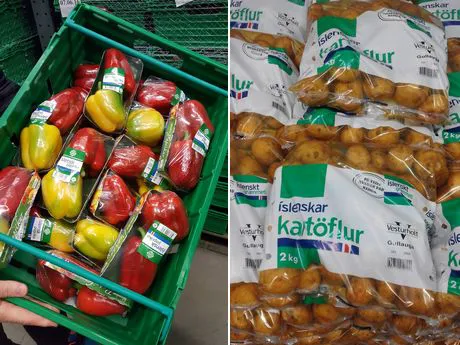
Icelandic bell peppers are large and heavy. There is an almost year round supply of Icelandic potatoes.
He is convinced that the Icelandic products are of a high quality. “The water quality is excellent, we have very clean water,” says Gunnlaugur. “The water that comes out of the tap in Reykjavik is cleaner than the water you buy bottled and that same water quality our growers use for irrigating their plants.” This has a very positive influence of the quality if cucumbers, for instance, says Gunnlaugur. He is convinced that an Icelandic cucumber is much tastier than a Dutch one.
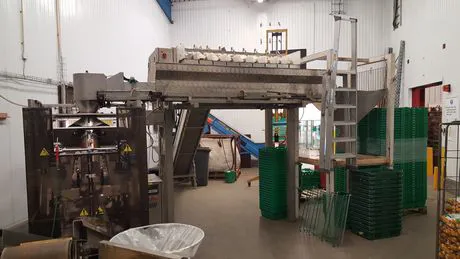
The packingline for the potatoes.
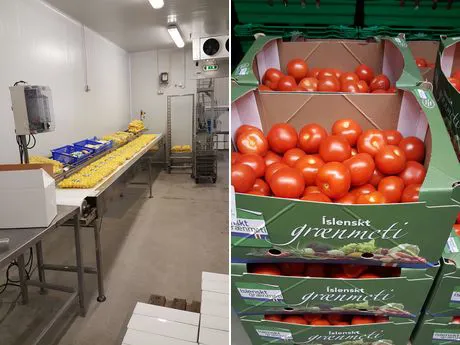
Porcessed potatoes and Icelandic tomatoes.
Labels for recognition
The growers still have other advantages. The temperature is stable and only on exception goes below 10 degrees Celsius or above 20 degrees Celsius. The greenhouses can also be heated cheaply using geothermal sources. Only the wind, which can reach speeds up to 50 metres per second, is a challenge to greenhouse builders. The greenhouses have been lit for a long time and since 1994, the cultivation under light is a success, for cucumbers and tomatoes in particular.
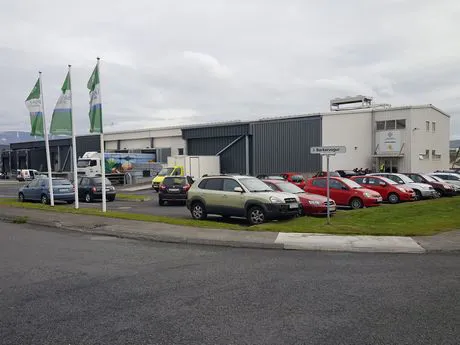
Almost every fruit and vegetable grown in Iceland passes this building; the headoffice of SFG.
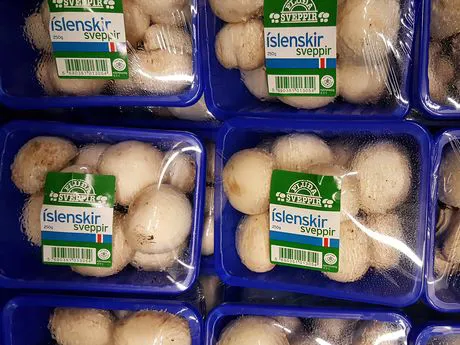
Icelandic mushrooms are also in demand.
For the open ground cultivation, worth around half of the volume SFG is marketing, the season will probably start halfway through next month. “The south of Iceland is warmer, so cultivation in open ground is possible there. The soil is good, carrots and broccoli do particularly well.” The potato market is between seasons. The island hardly imports potatoes; the Icelandic spuds are available for most of the year. “There are still a lot of products that aren’t grown here,” continues Gunnlaugur. He sees opportunities for the onion cultivation in particular.
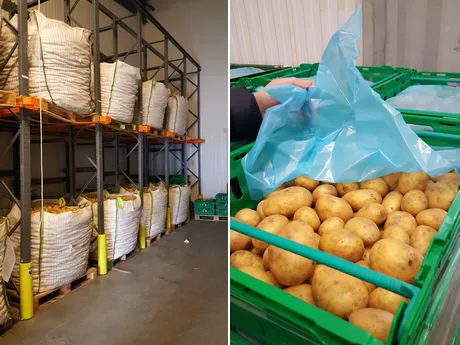
The last potatoes of the season in storage. This summer the new harvest will enter the market.
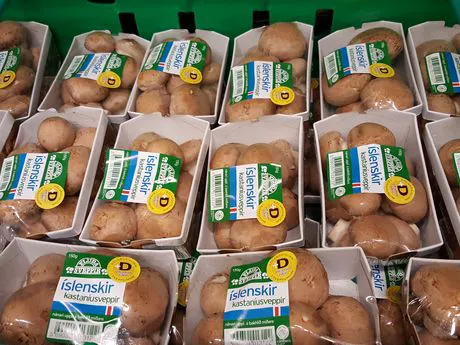
Chestnut mushrooms with extra vitamin D, a trend in Iceland.
The Icelandic products are loved, despite the being higher in price than that of most imported products. The products are foreseen of the recognisable label Islenskt Graenmeti, which means ‘Icelandic vegetable’. Every packaging also shows from which growers the product originates. SFG also sets up promotion campaigns for Icelandic vegetables. Products and recipes are highlighted in mixed advertising campaigns, in PR, newspapers, TV, Facebook for instance. “A lot of people estimate our promotional budget to be big 2-3 times more than it actually is but that isn’t true. The media loves to talk about the growers and by buying smartly we can do a lot of impact with a small budget.”
More information:
SFG
Gunnlaugur Karlsson
+354 570 8905
gk@sfg.is
www.sfg.is
